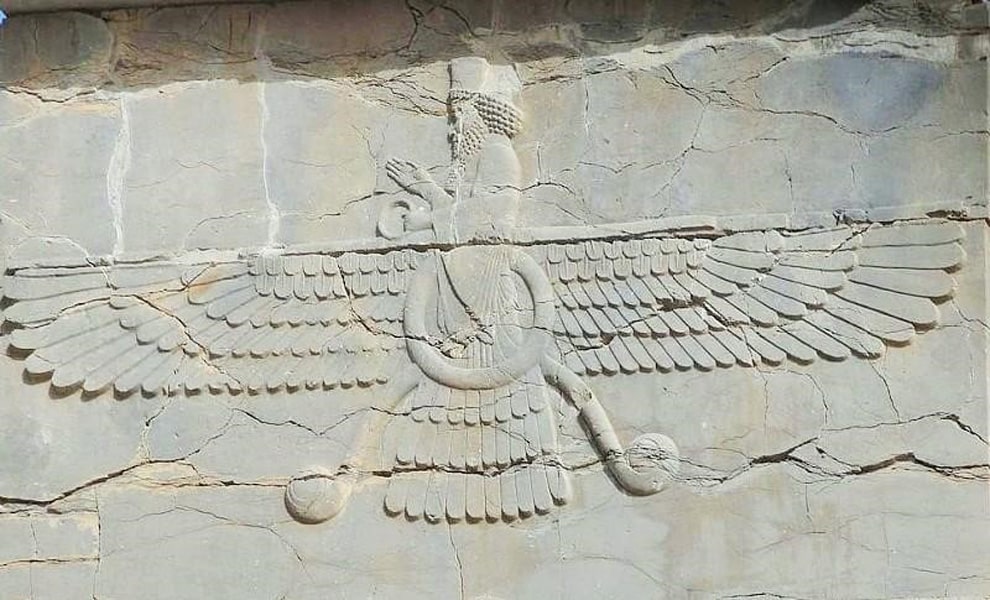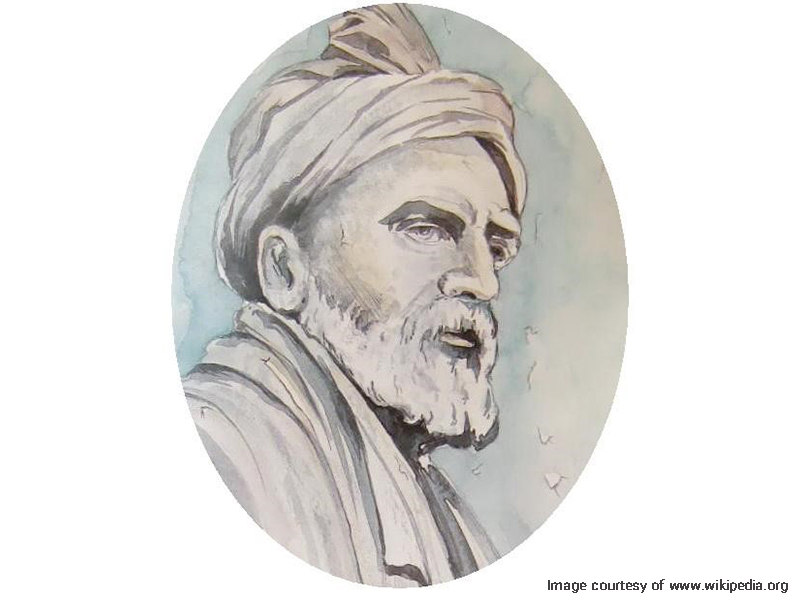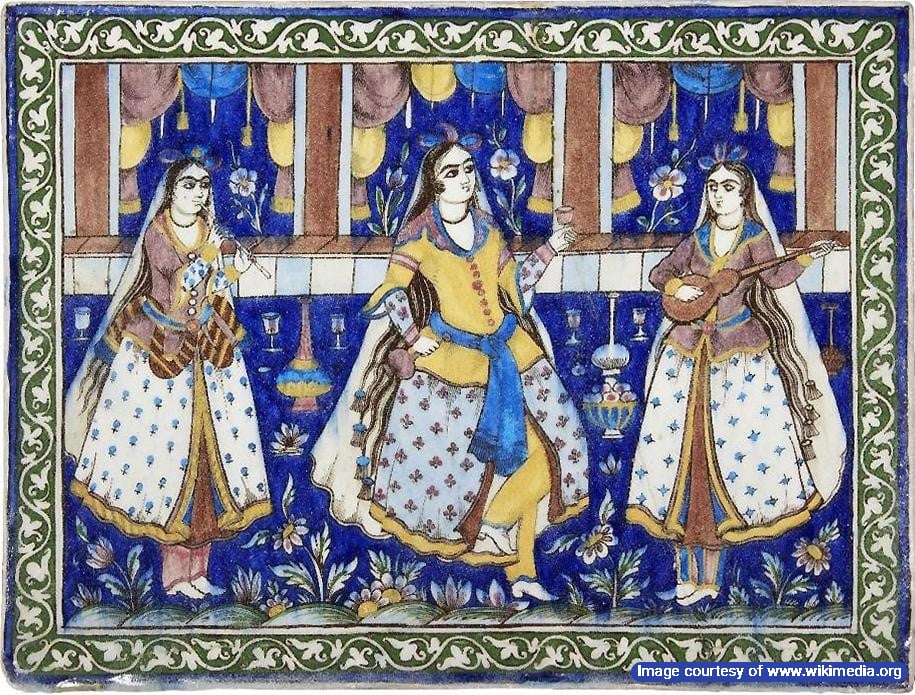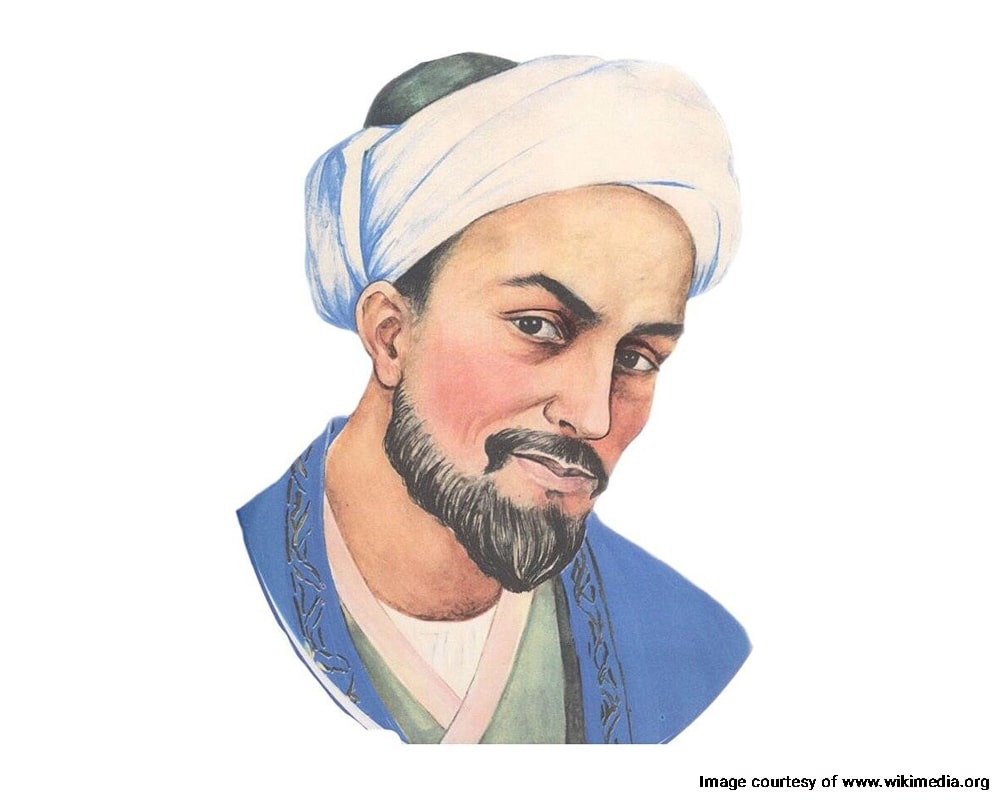
Abu Muhammad Musharrif al-Din Muslih ibn Abd-Allah ibn Musharrif, better known by his pen name, Saadi Shirazi, is one of the cornerstone figures of classical Persian literature. Along with Ferdowsi, Hafez, Rumi, and Khayam, Saadi is one of the most influential poets in Iranian culture. His impact on the Persian language is undeniable, and the tomb of Saadi is one of the most popular Shiraz tourist attractions.
Saadi derived his pen name from Atabeg Abu Bakr ibn Saad. He was the Salghurid governor of the Fars region in the mid-13th century. This classical poet is known by several titles such as Ostad-e Sokhan (Master of Speech), Padshah-e Sokhan (the King of Speech), and Sheikh-e Ajal (The Greatest Sage). He has written more than 16,000 couplets in Arabic and Persian which have been alluded to in the works of later poets such as
Saadi’s Life, Travels, and Education in the 13th Century
Saadi was born in the early 13th century in Shiraz during the reign of the Salghurids. The exact date of birth remains a mystery. There are several estimates, ranging from 1181 to 1218. Though he was most likely born in 1209 or 1210. Saadi lived during the Mongol Invasion of Persia in the 13th century. Due to Atabeg’s allegiance to the second Mongol emperor Ögedei Khan, Fars was spared from the Mongol massacre.
He lost his father, Abdullah, when he was 12. Abdullah served in the Salghurid court of Saad ibn Zangi, Abu Bakr’s father. He was Saadi’s first teacher who taught him from an early age. Saadi remembers his father and his teachings fondly in his poems.
After his father’s death, he was adopted by Masoud ibn Mosleh al-Farsi, his grandfather (on his mother’s side). Some sources mention that Madoud ibn Moselh was the father of Qutb al-Din al-Shirazi, the renowned 13th-century polymath and poet, making him Saadi’s uncle. Saadi studied Persian and Arabic literature and Islamic Sharia (religious principles) in Shiraz. The first Mongol campaign occurred in his teenage years, which drove him to travel to Baghdad.
Nizamiyyah School in Baghdad
Saadi left Shiraz for Baghdad in 1223 and continued his education at Nizamiyyah School. His education covered the Arabic language, Quran, Islamic principles and law, medicine, philosophy, and astronomy. Al-Ghazali was Saadi’s mentor and teacher and his teachings opposed the Ismaili philosophy. He had other tutors in Baghdad outside the school, including Sohrevardi, the famous Sufist, and Sabt ibn Jozi, a Muslim historian.
Saadi’s time in the Nizamiyyah school influenced his worldview and philosophy. His interactions with several Islamic scholars left an impression on his personality and poetry. After completing his education, Saadi chose to become a Vaez (Islamic preacher) and traveled across the Muslim world to spread Islamic values.
Saadi’s Travel Around the Muslim World
Saadi traveled around Islamic territories and is known as one of the most-traveled historical figures of his time. He went to the Levant (present-day Syria, Lebanon, Southern Turkey, Jordan), Hejaz (Arabian Peninsula), Hajj pilgrimage in Mecca, and Byzantine territories.
In his poems, there are allusions to Saadi’s travels to other regions that seem unlikely, such as Hindustan (India), Azerbaijan, Turkistan (present-day Afghanistan, Kazakhstan, southern Russia, etc), China, Yemen, and North Africa. It is assumed that these are simply imaginary stories to convey an important moral lesson.
Saadi’s travels have a deep impact on his writings and values of tolerance. In his travels, he gained insight into the human condition, realizing that while different, humans are essentially similar despite their superficial and cultural differences.
Saadi’s Return to Shiraz
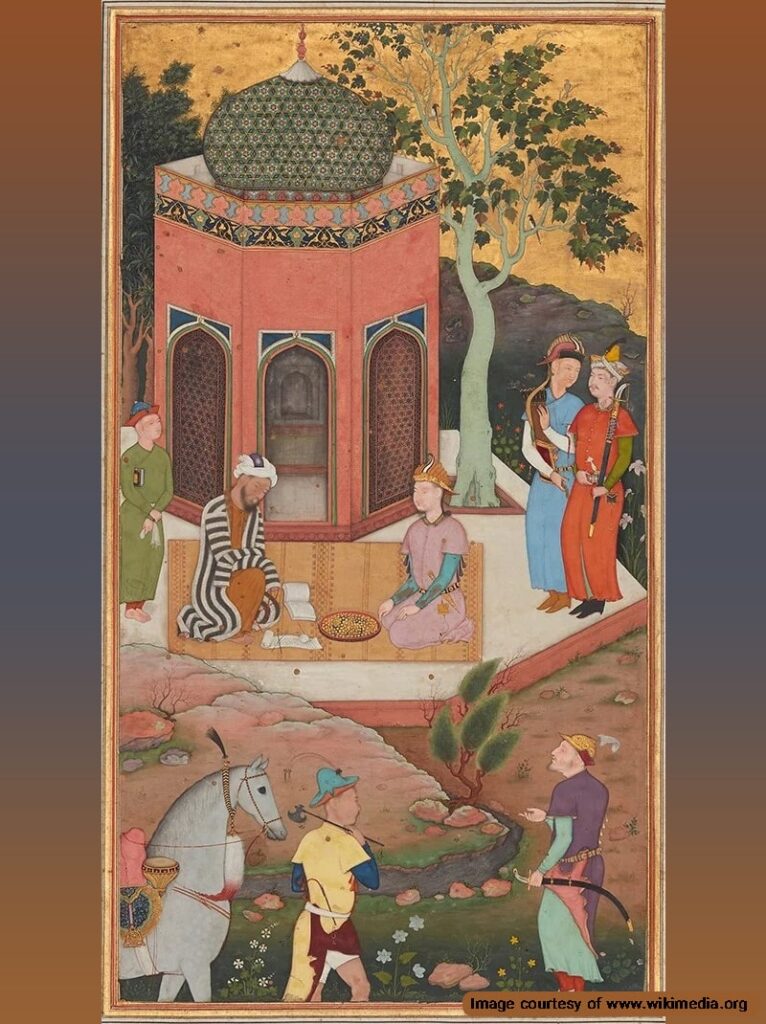
After 30 years of traveling, Saadi went back to Shiraz in 1257. Upon his return, he stayed in the Khangah (monastery) of Ibn Khafif, a Sufi mystic who had studied in Baghdad. In the following years, he joined the court of Abu Bakr ibn Saad Zangi, and they developed a friendly relationship similar to their fathers. He was not the court’s poet, but rather an adviser. During this time, Saadi revised and gathered his poems and prose inspired by his travels. He completed the poetry collection Bustan and dedicated it to Abu Bakr Zangi in 1257.
According to analysis of his later works, he fell into depression following Bustan. Perhaps due to realizing that he may have wasted his life traveling for no reason, and gave up his work. However, his close friends convinced him to continue with his literary endeavors. By 1258, he completed his collection of prose, Gulistan. He also dedicated Gulistan to Abu Bakr Zangi.
His two masterpieces of Persian literature rose to fame in the next years, making Saadi one of the few historical literary figures who enjoyed widespread recognition in his lifetime. After other scholars recognized Bustan and Gulistan, Saadi developed a relationship with the Ilkhanate court of Abaqa Khan.
He traveled to Mecca again for pilgrimage, and on his way back traveled to Azerbaijan. There he met with two Ilkhanate ministers Shams al-Din Juvayni and Ata-Malik Juvayni. There are other unconfirmed accounts of Saadi meeting famous historical figures in Shiraz, such as Nasir al-Din al-Tusi, the renowned polymath and architect, and Safi-ad-Din Ardabili, the Sufi mystic and ancestor of the Safavid Dynasty.
Saadi’s Death
There are several accounts of Saadi’s death and his reason for death. One account states that Nasi al-Din al-Tusi discovered his poems in praise of the Abbasid Caliphate, and ordered his punishment by Falak (foot whipping). The severe whipping caused severe injuries that led to his death.
However, there are inconsistencies with this account, as al-Tusi never visited Shiraz, and other sources state Saadi lived for years after al-Tusi’s death. The most likely date is sometime between 1291 and 1292. He was laid to rest in the Ibn Khafif Khangah in Shiraz due to old age.
Historical and Cultural Background
Saadi lived in an era of political turmoil, most notably the Mongol invasions of Persia. While Shiraz was spared, the stories of Mongol massacres of Nishapur and other areas reached the city. This created an atmosphere of fear in his early life that deeply affected his work and decision to travel around Asia.
The most significant cultural impact on Saadi’s works can be traced to the rise of the Sufi philosophy and determinism ideology in Islamic philosophy. Saadi’s connection with Sohrevardi during his stay in Baghdad introduced him to Sufi concepts that resonated in his poetry and prose.
Based on Saadi’s poems, we can assume that he was a follower of Sunni Islam, as he praises the four early Islamic caliphates (Abu Bakr, Omar, Osman, and Imam Ali) and uses Sunni Islamic concepts in his poems. But despite his religious beliefs, his works inspire tolerance and friendship between all sects and faiths.
Saadi Literary Works
Saadi’s writings have been translated into many languages, and have had a remarkable effect on Persian literature. Saadi has left behind an impressive collection of poetry and prose with over 16,000 couplets.
His most notable works are:
Bustan (The Orchard) or Saadi Nameh (Book of Saadi) is a collection of poems written throughout Saadi’s travels and during the Mongol invasion commanded by Genghis Khan. In 10 Baabs (chapters), Saadi covers important social issues such as morality, education, political instability, and Islamic values in the guise of epic poetry. It is written with the same meter style as Ferdowsi’s Shahnameh.
The Bustan contains roughly 4,000 couplets in ten chapters. The 183 parables in the book are divided into 10 chapters:
1: justice, 2: charity, 3: love and passion, 4: humility, 5: submitting to the will of God, 6: contentment, 7: education, 8: grace, 9: repentance and the path of redemption, and 10: prayer.
Gulistan (Rose Garden) is one of the most important examples of Persian prose. The book includes poems but the main body of work is in prose. It is considered a book of wisdom, satire, and insight. Literary analysis suggests Saadi wrote the book in 6 months in Shiraz, during a manic-depressive phase after completing the Bustan. Saadi had given up writing, contemplating the fleeting nature of life. So he decided to create a rose garden that would last for ages.
Gulistan is divided into eight chapters, reminiscing the eight gates of paradise:
1: Manners of Kings, 2: the Morals of Dervishes (Sufi philosophy), 3: the Excellence of Contentment, 4: The Benefits of Silence, 5: Love and Youth, 6: Frailty and Old Age, 7: Impact of Education. 8: etiquette of daily life.
Ghazaliat is a collection of Ghazals (amatory odes) by Saadi that were gathered in the Complete Works of Saadi.
Hazliat
Saadi has several collections of poetry and prose, some of which are described below:
Qasayed is a collection of 700 Arabic and Persian Qasida (ode) with themes of religious praise and moral preachings.
Marasi is a collection of Marsiya (elegiac poem) in honor of al-Musta’sim, the last Abbasid Caliphate, and Salghurid rulers Abu Bakr ibn Saad ibn Zangi, and his father Saad ibn Zangi.
Sahebiya is a collection of Qit’a (monorhyme Poetry) about the Sahebiya, a Sufi-like movement that does not follow Sufi practices. They believe performing religious duties is for the mass population concerned with appearances, and one must try to understand the nature of existence.
Nasihat ol-Molouk (advice for kings) is a collection of prose with a few poems. It offers advice for rulers, similar in tone to a book of the same name by al-Qazali.
Resala Aql va Eshq (the book of wisdom and love) is another short book in prose, which explains the relationship between worldly wisdom, science, and faith.
Majales Panj-Ganeh (The Five Assemblies) is another work of prose praising religious figures while preaching religious ideals.
Style and Key Themes
Saadi’s style is often described as Sahl o Momtan’e (seemingly simple and easy to understand, nearly impossible to replicate). He is widely recognized as a master of Persian prose and poetry. He mostly focuses on moral lessons conveyed through parables depicted as stories from his travels. Most of the stories are imaginary, but some of the events may have happened in his real life.
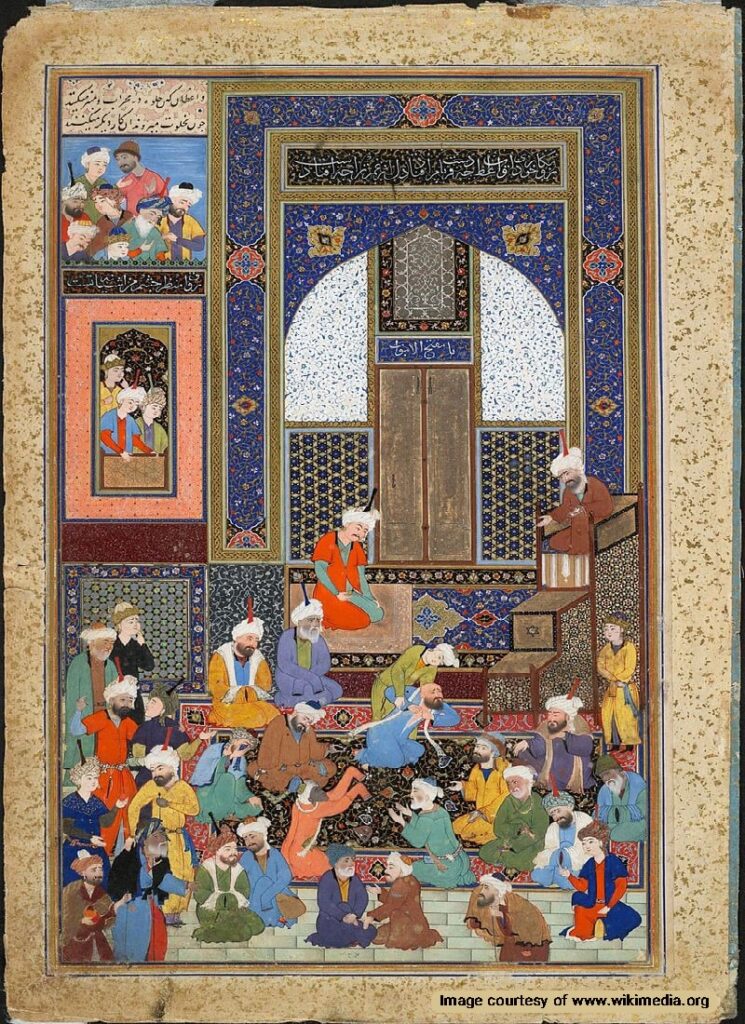
The themes include moral values such as humility and honesty. These were a response to a rise in superficial behavior by the elite. This outlook was adopted by later poets influenced by the works of Saadi. One of the most famous poems with such a theme is a Ghazal (ode) by Hafez proclaiming this behavior:
واعظان کاین جلوه در محراب و منبر میکنند
The preachers who appear righteous on the altar and minbar (pulpit)
چون به خلوت میروند آن کار دیگر میکنند
Once in their private quarters, engage in other affairs (what they preach as sins)
Saadi saw the atmosphere of fear and intolerance during his travels throughout the Muslim world during the Mongol invasion. He realized that as a literary figure, the best he could do was preach morality through his work. His work is targeted at both the common folk and the wise. This is why he is recognized as a sage, profoundly wise yet simple in appearance.
Saadi’s Impact on Iranian Culture and Persian Literature
Saadi’s poetry and prose have shaped the evolution of Persian classical literature. His impact is visible in the works of following classical poets and writers, and modern Persian literature. Hafez is one of the classical Iranian poets who was inspired by Saadi’s style in writing Ghazals. In modern Iranian literature, authors such as Mohammad-Ali Jamalzadeh and Ibrahim Golestan showcase direct influence from Saadi.
Saadi’s works have been an integral part of study materials since the era of MaktabKhaneh (traditional schools). In addition to his influence on the works of later poets and writers, Saadi is one of the most alluded and directly referenced authors in Persian literature. Saadi’s writings have become an essential piece of Iranian culture throughout the years. His writings are used as popular Iranian proverbs in everyday language.
Saadi’s Impact on Western Literature
A selection of Saadi’s Gulistan was first translated into French in the 17th century by André du Ryer. It quickly attracted the French literary community. A few years later, Adam Olearius and Friedrich Hossbach translated Saadi’s works into German. In London, Stephen Sullivan translated a selection of Gulistan into English. It was also translated into Latin and Dutch in the following years.
Saadi’s books have been a revered source of research for European orientalists. He also influenced and inspired artists and writers such as Victor Hugo, who wrote Les Orientales, and Alfred de Musset, who wrote Histoire d’un merle blanc. The list of European poets inspired by Saadi is extensive, including Leconte de Lisle, who wrote Les Roses d’Ispahan based on Gulistan and Bustan. Les Roses d’Ispahan, Myriam Harry, Marthe Bibesco, Marthe Bibesco, and many others were influenced by the works of Saadi, who introduced them to oriental literature.
Learn More About Iranian Poets and Persian Literature
Saadi is one of the West’s most famous Iranian literary figures, along with Hafez, Rumi, and Ferdowsi. But the realm of Persian literature is far vaster than these flagship artists. Iran’s extensive literature is one of the most important aspects of our intangible cultural heritage. It is the cornerstone of Iranian culture. If you want to learn more about Persian Literature, you can check out the works of other Iranian poets and writers. Persian literature from the early post-Islam era begins with examples such as Rudaki (known as the first Persian poet) to contemporary poets like Nima Yooshij and Mohammad-Hossein Shahriar.
Frequently Asked Questions About Saadi Shirazi
If you have other questions about Saadi Shirazi or other aspects of Persian literature, please let us know in the comments. We will respond as soon as possible.
Who was Saadi Shirazi?
Saadi Shirazi (Abu Muhammad Musharrif al-Din Muslih ibn Abd-Allah ibn Musharrif), also known simply as Saadi, was a 13th-century Persian poet and prose writer. He is best known for his works “Gulistan” (The Rose Garden) and “Bustan” (The Orchard), which are considered masterpieces of Persian literature.
What are the main works of Saadi?
Saadi’s most notable works include:
• Gulistan (The Rose Garden): A collection of poetry and stories that convey moral lessons and social commentary.
• Bustan (The Orchard): A didactic poem that outlines the virtues of an ideal ruler and ethical conduct.
• Divan-e Saadi: A collection of ghazals (lyric poems) that showcase his lyrical prowess.
What are the themes of Saadi’s poetry?
Saadi’s poetry often touches on themes such as love, morality, wisdom, human nature, and the importance of compassion and empathy. He frequently used storytelling to convey moral lessons.
What is Saadi’s impact on Persian literature?
Saadi is regarded as one of the greatest poets in Persian literature, and his works have had a profound influence on later writers and poets. His use of simple language, wit, and universal themes makes his work accessible and enduring.
Why is Saadi sometimes called “The Master of Prose”?
Saadi is often referred to as “The Master of Prose” due to his skillful use of prose in “Gulistan.” The blend of elegant prose with poetic elements has made this work particularly celebrated.
What impact did Saadi have on Iranian culture and society?
Saadi’s writings emphasized moral values, social justice, and the importance of education, which had a lasting impact on Persian culture and beyond. His works have been translated into many languages and continue to be studied and appreciated today.
How is Saadi remembered in contemporary culture?
Saadi is remembered as a literary icon and is celebrated not only in Iran but also in many parts of the world. His quotations and aphorisms are commonly cited in literature, education, and philosophical discussions.
Are there any famous quotations by Saadi?
Yes, Saadi is known for many memorable quotes. One of his most famous sayings is: “Human beings are members of a whole, in the creation of one essence and soul.” This reflects his beliefs in unity and humanism.








